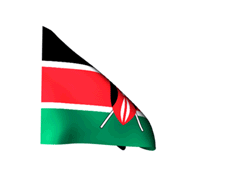ANALYSIS OF THE SUPREME COURT JUDGMENT IN CHANDRAMANI NANDA V. SARAT CHANDRA SWAIN S.L.P.(C) NOS. 3050 OF 2023, ENHANCEMENT OF COMPENSATION IN MOTOR ACCIDENT CASES
The judgement delivered by the Supreme Court of India (Division Bench) on October 15, 2024, revolves around the enhancement of compensation in a motor accident claim. The case reflects the Court’s approach in ensuring fair and adequate compensation for victims who suffer severe and life-altering injuries. This article delves into the key aspects of the case, including the factual background, legal issues, and the reasoning adopted by the Supreme Court in determining the compensation.
Background of the Case
On January 16, 2014, four persons, including the Appellant Chandramani Nanda, were traveling in a Verito Vibe car from Sambalpur to Cuttack, Odisha, when a bus (registration No. OD-14-A-1774) collided with their vehicle. The accident occurred on NH-55 near CPP Chawk, NALCO, Anugul, Odisha, resulting in severe injuries to all occupants. Tragically, one of the car occupants, Ranjan Rout, succumbed to his injuries on May 31, 2017. A police case was registered against the bus driver under Sections 279 (rash driving), 337, and 338 of the Indian Penal Code (IPC).
Chandramani Nanda suffered grievous head injuries and underwent major brain surgery. Following the accident, he was hospitalised and treated at various facilities, including Angul Government Hospital and Ashwini Hospital, Cuttack, where he remained admitted from January 16 to February 11, 2014. His condition left him mentally unstable and bedridden. The Claimant, Chandramani Nanda, filed a petition seeking compensation of Rs. 30,00,000 under the Motor Accident Claims Tribunal (MACT), which was adjudicated along with other claims arising from the same incident.
Proceedings before the Tribunal and High Court:
The Tribunal concluded that the bus driver’s rash and negligent driving led to the accident and held the insurance company liable for the compensation. It awarded a sum of Rs 20,60,385 based on various factors, including loss of future income, medical expenses, and pain and suffering. Dissatisfied with the amount, the Claimant and the Insurance Company both appealed to the High Court of Orissa. The High Court enhanced the compensation to Rs 30,99,873, considering the Claimant’s functional disability as 100%, rather than the 60% assessed by the Tribunal.
Issues before the Supreme Court
The primary issues before the Supreme Court in this Appeal were:
1) Whether the Claimant’s income should have been considered at a higher rate of Rs 2,64,000 per annum (as claimed) rather than 1,62,420 per annum as assessed by the Tribunal and the High Court.
2) Whether the Claimant was entitled to an addition for future prospects in the calculation of loss of earning capacity, as per the guidelines established in the National Insurance Company Ltd. v. Pranay Sethi 2017 (16) SCC 680.
3) Whether a higher amount should be awarded for the expenses related to ongoing medical care and the need for an attendant due to the Claimant’s severe injuries.
4) Whether the compensation awarded for pain and suffering, as well as the loss of marriage prospects, was adequate.
Supreme Court’s Decision
The Court reviewed the evidence, including the Claimant’s income tax returns and employment records, which indicated that his annual income was progressively increasing. It noted that the Tribunal and High Court had based their assessment on outdated income tax returns from the financial year 2010-11, while the accident occurred in 2014. Recognizing this gap, the Supreme Court considered it reasonable to take the Claimant’s annual income at 2,00,000, higher than the figure considered by the lower courts.
The Supreme Court applied the principle established in the Pranay Sethi case (supra), which allows for the inclusion of future prospects in determining compensation for loss of earning capacity. As the Claimant was 32 years old at the time of the accident, the Court added 40% of the base income towards future prospects. This adjustment significantly increased the amount calculated for the loss of future income, reflecting the loss of the potential growth in earnings due to the injuries.
Recognizing the Claimant’s condition and the need for long-term care, the Court awarded an additional sum of Rs 1,00,000 for future attendant charges. It took into account the burden on the Claimant’s elderly mother, who was primarily responsible for his care, and the ongoing nature of his medical needs. While the existing award for medical expenses was considered appropriate based on the bills submitted, the additional provision for attendant costs was deemed necessary to ensure that the Claimant received adequate care.
The Court found the compensation awarded under these heads by the Tribunal and the High Court to be on the lower side, considering the severity and lifelong impact of the injuries. It enhanced the award for pain and suffering from Rs 50,000 to Rs 1,00,000 and awarded an additional Rs 1,00,000 for loss of marriage prospects, recognizing that the injuries had significantly affected the Claimant’s personal and social life.
Final Award and Legal Principles Affirmed
The Supreme Court concluded that the total compensation should be enhanced to Rs 52,31,000, inclusive of all the factors discussed above. The amount was subject to interest at the rate of 6% per annum from the date of the initial claim, as determined by the High Court. The judgement reinforced several important legal principles regarding compensation in motor accident cases:
1) The Court reiterated that future prospects must be factored in when calculating compensation for loss of earnings, particularly for young claimants who have the potential for career advancement.
2) That even if the percentage of physical disability is assessed at a certain level, the resulting functional disability (impact on work and daily life) may be considered higher, leading to a greater compensation amount.
3) The judgement emphasised the Court’s duty to ensure just and reasonable compensation for accident victims, even if it exceeds the amount initially claimed by the petitioner.
4) The Court recognized the necessity of awarding compensation for ongoing care needs, acknowledging the lifelong challenges faced by victims with severe injuries.
Conclusion
The Supreme Court’s decision in this case underlines the judiciary’s commitment to ensuring that compensation in motor accident cases is comprehensive and reflective of the victim’s needs and losses. By focusing on factors like future income, the extent of disability, and the need for long-term care, the Court aimed to provide a more holistic and fair resolution to the victim’s plight. This case sets a precedent for similar cases where accident victims suffer significant and permanent impairments, ensuring that they are not left with inadequate compensation to manage their changed circumstances. The judgement serves as a reminder that justice in compensation claims is not merely about adherence to technicalities but about ensuring real-world support for those who suffer life-altering injuries.
Shikha
Associate
The Indian Lawyer & Allied Services
Shikha
Associate
The Indian Lawyer & Allied Services





































Leave a Reply